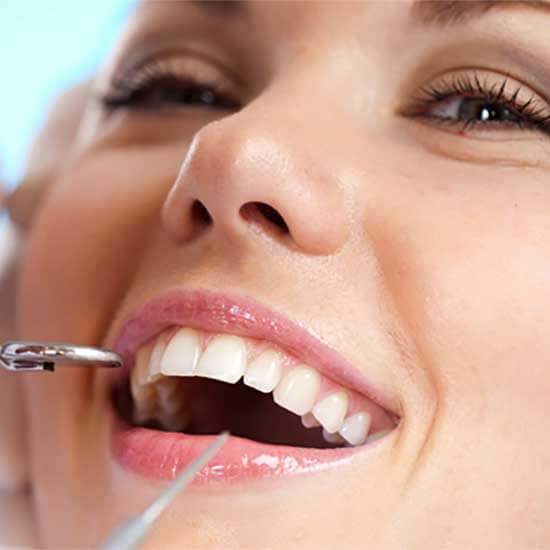
You may be familiar with the fact that misaligned teeth can result in bite and dental impairments, but did you know that jaw alignment deformities can also cause these difficulties? The jaw is misaligned when the top and lower teeth do not meet comfortably in the mouth. Overbite, in which the upper teeth protrude, and underbite, in which the lower teeth lay in front of the upper teeth, are the two most prevalent forms of misalignment.
Many people have misaligned jaws, which can cause physical and mental discomfort when they feel self-conscious or uncomfortable. If a misaligned jaw is not treated, it can cause trouble eating, breathing, sleeping, speaking, and severe pain. Dentists and orthodontists provide various misaligned jaw treatment options, which can take up to a year or more, depending on the severity of your condition.
What A Misaligned Jaw Looks Like?
Misaligned jaws are often bothersome and visible, and many children are teased by their classmates. Our “bite” relates to where our upper and lower teeth meet, affecting how we bite, eat, and talk. An underbite and an overbite are the most prevalent bite problems. An underbite arises when the bottom jaw sits in front of the upper jaw, and an overbite occurs when the upper jaw protrudes irregularly over the lower jaw.
While these impairments appear to be unattractive, they have far-reaching consequences. Underbite causes a bulldog impression because the lower jaw protrudes out, putting a lot of strain on the joints and causing dental wear. Overbites cause buck teeth to protrude so that they can break easily and make closing the mouth and lips difficult. They also cause an elongated face, speech difficulties, and an increased risk of dental decay as oral tissue gets dry. Misaligned jaw treatment options such as dental braces, cosmetic dentistry, and oral surgery are common methods to resolve the problem, depending on the extent of the misalignment and which bite is involved.
Misaligned Jaw Treatment Options
How to Fix a Misaligned Jaw?
Braces
Braces are one of the most commonly used treatments for jaw and tooth alignment issues. In conventional braces treatment, metal brackets are attached to the teeth and connected with a wire. This wire progressively tightens, bringing the teeth together and resulting in jaw realignment. Metal braces are generally worn for 18 to 22 months, but this can differ from person to person.
Headgear Braces
When traditional braces are ineffective, dentists may advise headgear braces. Headgear consists of wires surrounding the inside and outside of the mouth. Retraction headgear is used to rescind the upper jaw, whereas protraction headgear moves the upper jaw forward while keeping the lower jaw stable. The headgear should be worn 12-14 hours daily, with the total amount of time required depending on the patient’s specific needs and bite problems.
Upper Jaw Expander
Upper jaw expanders are wire-frame devices that fit throughout the upper palate and can be used to remedy an underbite. The patient uses a special key to slowly widen the expander each night, causing the upper jaw to expand and reduce bite problems. This shifted jaw treatment procedure usually takes about a year, after which the device is replaced with a retainer.
Jaw Surgery
Orthognathic or jaw surgery, which straightens or realigns your jaw, is the most severe remedy for a misaligned jaw. It may be advised if the jaw misalignment interferes with daily activities such as conversing, eating, and sleeping. The cost of corrective shifted jaw treatment or surgery is determined by a number of considerations, including the surgery type (in-patient or outpatient), the intensity of the misaligned jaw, and other patient-specific conditions.
The Significance of Orthodontic Visits
While many bite difficulties are evident, others are so subtle that jaw realignment detection will be tricky. In these cases, it is essential that adults and children have regular dental visits to monitor tooth movement and development. Orthodontic visits are necessary, particularly for younger children, to oversee jaw realignment, observe incoming teeth, decrease the chance of impacted teeth, and identify hidden dental problems. Not only will your teeth be inspected, but your jaws and mouth will be cleaned and checked for signs of associated symptoms, decay, and disorder. These visits also give patients the knowledge they need to develop a better dental routine to keep their teeth well-maintained and decay-free during and after dental therapy.
Correcting bite problems with advanced dental techniques customised to each patient’s requirements is necessary —our team of experts uses a methodical approach to crooked jaw treatment. Our qualified team uses effective treatments for jaw misalignment and functionality through accurate diagnosis and individualised care, guaranteeing the best possible dental health and well-being.
American Dental Clinic offers advanced and effective treatments for jaw misalignment and bite problems, ensuring optimal oral health and function for our patients. Whether addressing a crooked jaw or correcting misaligned bites, our skilled orthodontists in Dubai provide personalised care tailored to each individual’s needs. From TMJ treatment in Dubai to utilising advanced dental techniques, our commitment to excellence extends to every aspect of misaligned jaw treatment. As the best dental clinic in Abu Dhabi, we prioritise patient comfort and satisfaction, striving to deliver exceptional results that enhance aesthetics and functionality. Trust our experienced team to guide you through how to fix a misaligned jaw, restoring harmony and confidence to your smile.
Further Reading:





